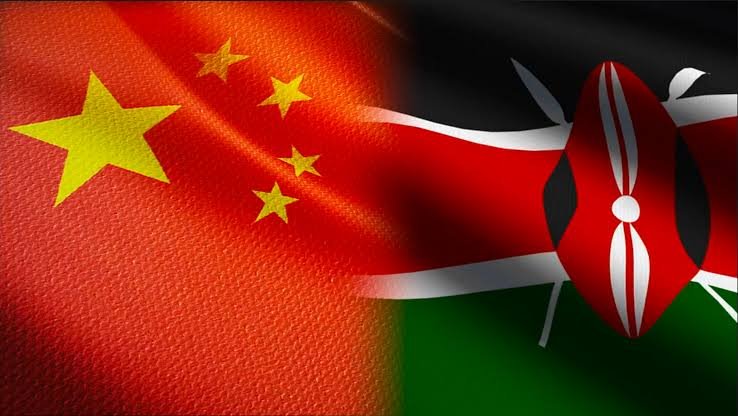Kenya’s Strategic Pivot: Navigating Post-AGOA Trade with China’s Duty-Free Market
NAIROBI – The impending expiration of the African Growth and Opportunity Act (AGOA) has sent ripples through Kenya’s economic planning circles, compelling a strategic reevaluation of the nation’s international trade partnerships. With the longstanding US trade pact set to expire in 2025, Kenyan officials and export leaders are not waiting idly. Instead, they are aggressively pursuing an alternative and potentially more expansive market: China. This strategic pivot aims to secure duty-free access for Kenyan products, a move that could redefine the East African nation’s export economy for decades to come.
The urgency of this shift cannot be overstated. AGOA, a cornerstone of US-Africa trade policy since 2000, has provided 36 Sub-Saharan African nations, including Kenya, with preferential, duty-free access to the American market for over 6,500 products. For Kenya, the second-largest exporter under AGOA in Sub-Saharan Africa, the pact has been instrumental in boosting sectors like textiles and apparel, which employ tens of thousands of citizens. The potential loss of this access poses a significant threat to economic stability and growth, making the exploration of new markets a national imperative.
The End of an Era: AGOA’s Legacy and Looming Uncertainty
Since its inception, the African Growth and Opportunity Act has been a powerful engine for economic development across the continent. For Kenya, the benefits have been substantial. In 2022, Kenya’s exports to the United States under AGOA were valued at over $600 million, predominantly driven by the textile industry. Companies like Vivo Fashion Group and numerous apparel manufacturers have built their business models around this preferential access, creating a vital export corridor that supports a vast supply chain from cotton farms to garment factories.
However, the future of AGOA remains shrouded in uncertainty. While the US Congress has initiated discussions about its extension, the geopolitical and economic landscape has shifted dramatically since the act was first signed. The lack of a long-term guarantee has forced Kenyan policymakers to adopt a pragmatic, forward-looking approach. Relying on a single market is now seen as an untenable risk. As reported by Standard Media, the Kenyan government is actively engaging with US counterparts to advocate for an extension, but is simultaneously accelerating its “Look East” strategy with a renewed focus on China.
“We are not taking any chances. We are engaging the US for an extension of AGOA, but we are also looking at the Chinese market,” a senior Kenyan official told Standard Media. “The Chinese market is huge, and if we get duty-free access, it will be a game-changer for our exports.”
This dual-track strategy highlights a mature and calculated approach to international trade. Kenya is not simply abandoning one partner for another; rather, it is diversifying its economic portfolio to mitigate risk and capitalize on emerging global opportunities. The goal is to build a resilient export economy that is not dependent on the political whims of a single nation. For the latest developments on this and other Kenya news, stakeholders are closely monitoring government announcements.
Unlocking the Dragon’s Vault: The Promise and Challenge of the Chinese Market
China presents a tantalizing opportunity for Kenyan exporters. With a population of over 1.4 billion and a rapidly growing middle class, the demand for diverse consumer goods, agricultural products, and raw materials is immense. Securing duty-free access for Kenyan products like tea, coffee, cut flowers, avocados, and textiles could unlock billions in new export revenue. The potential scale dwarfs even the most successful years under AGOA, positioning Kenya to become a key African trade partner for the world’s second-largest economy.
Kenya’s pursuit of this access is channeled through high-level diplomatic engagements. President William Ruto’s administration has been vocal about its intentions to deepen trade ties with Beijing. The focus is on convincing China to grant Kenya and other African nations more favorable terms under the existing framework of the Forum on China-Africa Cooperation (FOCAC). The success of this initiative hinges on Kenya’s ability to negotiate terms that are not only beneficial but also sustainable and mutually rewarding.
“The Chinese market is huge, and if we get duty-free access, it will be a game-changer for our exports,” the official emphasized in the Standard Media report, underscoring the transformative potential of such a deal.
However, this path is not without its challenges. The Chinese market is highly competitive, with stringent quality and phytosanitary standards that Kenyan producers must meet consistently. Scaling up production to meet the massive demand, while maintaining high quality, will require significant investment in agricultural technology, logistics, and supply chain management. Furthermore, there are concerns about the trade balance; Kenya currently imports far more from China than it exports, and a new trade deal must be structured to help narrow this deficit.
Key sectors are already positioning themselves for this potential shift. The horticulture industry, which is a major source of employment in rural Kenya, sees China as a vast, untapped market for its premium products. The avocado, in particular, has been flagged as a star performer with enormous growth potential, following Kenya’s recent gaining of market access for the fruit. Similarly, the coffee sector, which has historically relied on European markets, views China’s burgeoning coffee culture as a golden opportunity for direct sales, fetching better prices for local farmers.
This strategic diversification is a testament to Kenya’s evolving role in global trade dynamics. The country is moving from a position of dependency to one of agency, actively shaping its economic destiny by building bridges to multiple powerful economies. The expiration of AGOA, while a potential shock, is also being viewed as a catalyst for this necessary and long-overdue diversification. It is pushing Kenyan industries to become more competitive, efficient, and innovative to survive and thrive in a post-AGOA world.
As the 2025 deadline approaches, the coming months will be critical. Kenyan trade delegations will be shuttling between Nairobi, Washington, and Beijing, negotiating the best possible terms for the nation’s future. The success of these efforts will have a profound impact on job creation, foreign exchange earnings, and the overall health of the Kenyan economy. The pivot to China is more than just a trade strategy; it is a defining moment for Kenya’s economic sovereignty and its place in the new global economic order. The world will be watching to see if this bold bet on East-West trade reaps the rewards that Kenyan officials and business leaders so confidently predict.


